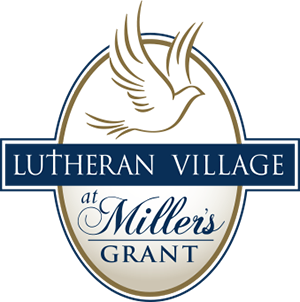Nursing Homes versus Senior Living Communities: 4 Differences
It’s easy to confuse senior living communities as nursing home, but the two are dramatically different. When planning for the future, its best to understand how they are different so you can you can make a well informed decision and choose the best option for your needs. Discover four main differences between the two.
Four Differences of Nursing Homes and Senior Living Communities
#1 Primary purpose
When recovering from an injury, surgery or serious illness, a physician may prescribe a nursing home stay following a hospitalization. Sometimes referred to as a “step down” from a hospital, nursing homes provide hands-on medical care when additional care is needed before returning home. The types of care provided include skilled nursing, orthopedic care, wound care, physical, speech and occupational care, intravenous therapy – such as chemotherapy – and post-surgical care.
Nursing homes also provide long-term care and are often the best choice for an ongoing medical problems or disability that requires professional round-the-clock care. According to the American Geriatrics Society’s Health in Aging Foundation article Nursing Homes, statistically, almost half of the long-term residents of nursing homes are 85 or older, and almost three-quarters are female. Of the residents admitted for long-term care, about half stay at least one year and 21% remain for almost five years.
Senior living communities focus on supporting seniors to live actively and independently for as long as they are able and provide a continuum of care at all levels including independent living requiring no care, assisted living – requiring some help with daily living activities and skilled nursing – requiring 24/7 care. Some senior living communities, including Lutheran Village at Miller’s Grant, also offer short-term and outpatient rehabilitation services.
#2 Lifestyles greatly differ
As noted above, nursing homes are a great option for short-term recovery stays or long-term care though they will not have all the services and amenities that make senior living communities a lively and fun place to live. Senior living communities provide care within a greater context of thriving through active aging. For example our wellness program, Flourish™, takes a holistic approach to wellness – body, mind and spirit – with seven wellness dimensions. Additionally, in-community services (e.g. local transportation, dining, salon/barber, fitness center, pool) provide convenience and promote independence.
#3 Living space
Nursing homes often resemble the look and feel of hospitals because of the need for medical care. Senior living communities offer private housing options ranging from single-family homes to duplexes, condos and apartments designed with all the extras seniors need. No longer are residents crammed into tiny, shared rooms because today’s senior living communities offer diverse floor plans, spacious open living areas, high ceilings and plenty of natural light, as well as modern kitchens, large closets and features like walk-in showers and grab bars to make life easier and safer. Additionally, many senior living communities, like Lutheran Village at Miller’s Grant, also welcome pets.
#4 Food versus cuisines
Nursing homes have to cater to a variety of health problems, which places limits on food ingredients that can be served. As a result, flavor is often lacking.
Today’s senior living communities offer chef-prepared meals that rival great restaurants. Menus include diverse choices at each meal with dishes crafted from fresh ingredients so they are nourishing as well as appetizing and elegant. If special diets need to be followed, senior living communities can easily meet them without sacrificing taste and appeal. Also new is the variety of dining venues that are offered, from formal dining with wait staff to casual to lite fare in a pub like setting.
Nursing homes and senior living communities are very different including their primary purpose, lifestyle, living accommodations and meals. Nursing homes are designed for seniors who need round-the-clock medical care where as senior living communities focus on seniors being active and independent for as long as they are able and provide just the right amount of help at every level of care (i.e. independent living, assisted living and skilled nursing). Learn more from our Senior Living Options Guide.





